Popular Tyrant Peisistratos Tricked The Athenians To Seize Power And People Loved Him
Ellen Lloyd - AncientPages.com - By modern definition, a tyrant is a cruel and oppressive ruler hated by most people.
Peisistratos was a tyrant, but this doesn’t mean he was a bad ruler and was certainly not despised by the people. On the contrary. He was immensely popular among poorer people because he did not hesitate to confront the aristocracy. He was a fair ruler who boosted the city’s economy and spread wealth equally among the Athenians.
Unlike many other rulers, Peisistratos did not seize power violently. Instead, he used a cunning and funny way to convince people he was their ideal ruler.
Born in 608 B.C. in Athens, Peisistratos was a one-time brother-in-law of Cleisthenes, an ancient Athenian lawgiver credited with reforming the constitution of ancient Athens and setting it on a democratic footing in 508 B.C. He was also related to the Athenian statesman, lawmaker, and poet Solon.
In 565 B.C. Peisistratos successfully managed to capture the port of Nisaea in nearby Megara. This victory made him famous, and he gained support from the Men of the Hill, the poorer and the majority of the population.
First Attempt To Trick The People Of Athens
Peisistratos way to power was not easy, and he encountered many obstacles. According to ancient Greek historian Herodotus, Peisistratos deliberately inflicted wounds on himself and his mules to demand from the Athenian people bodyguards for protection, which he received.
In The Histories, Herotodus writes: “…he inflicted wounds upon himself and upon his mules, and then drove his car into the market-place, as if he had just escaped from his opponents, who, as he alleged, had desired to kill him when he was driving into the country: and he asked the commons that he might obtain some protection from them, for before this he had gained reputation in his command against the Megarians, during which he took Nisaia and performed other signal service. And the commons of the Athenians being deceived gave him those 67 men chosen from the dwellers in the city who became not indeed the spear-men 68 of Peisistratos but his club-men; for they followed behind him bearing wooden clubs. And these made insurrection with Peisistratos and obtained possession of the Acropolis.
Then Peisistratos was ruler of the Athenians, not having disturbed the existing magistrates nor changed the ancient laws; but he administered the State under that constitution of things which was already established, ordering it fairly and well.
The Athenians celebrating the return of Peisistratos. Ellis, Edward Sylvester, 1840-1916; Horne, Charles F. (Charles Francis), 1870-1942 - The story of the greatest nations, from the dawn of history to the twentieth century (published in 1900). Credit: Public Domain
However, no long time after this the followers of Megacles and those of Lycurgos joined together and drove him forth. Thus Peisistratos had obtained possession of Athens for the first time, and thus he lost the power before he had it firmly rooted.
But those who had driven out Peisistratos became afterwards at feud with one another again. And Megacles, harassed by the party strife, 69 sent a message to Peisistratos asking whether he was willing to have his daughter to wife on condition of becoming despot.”
Second Attempt To Trick The Athenians Using Goddess Athena
Peisistratos did accept the arrangement, but he wanted people to see him as the best choice to be the ruler of Athens.
So, Peisistratos came up with an idea. One day, he rode into the city with a tall, young girl, claiming that she was goddess Athena, the patron goddess of Athens.
Amazed people watched as their magnificent goddess, dressed in full armor riding a golden chariot along the streets yelled to the onlookers: “"O Athenians, receive with favor Peisistratos, whom Athene herself, honoring him most of all men, brings back to her Acropolis."
As Herodotus explained: “So the heralds went about hither and thither saying this, and straightway there came to the demes in the country round a report that Athene was bringing Peisistratos back, while at the same time the men of the city, persuaded that the woman was the very goddess herself, were paying wor-ship to the human creature and receiving Peisistratos.”
Illustration from 1838 by M. A. Barth depicting the return of Peisistratos to Athens, accompanied by a woman dressed as Athena, as described by the Greek historian Herodotus. Credit: Public Domain
The young woman was, of course, not the goddess Athena. She was a girl raised in a nearby village, but people embraced Peisistratos as their new ruler. Whether the Athenians knew this woman was not the goddess Athena is unknown. Some people may have suspected this was a clever political maneuver to gain power, and his efforts paid off.
One can say his means were dishonest, but his leadership was better than most in those before the birth of true democracy. He used his power in a favorable way with the aim of turning his people into his allies, especially the working class.
In Athens, Peisistratos' public building projects provided jobs to needy people while simultaneously making the city a cultural center. Peisistratos ignored the ruling aristocracy. Instead, he focused his attention on helping poorer people by reducing their taxes and giving them free loans to help them build up their farms. He improved not only the city's economy but also Athens's infrastructure.
With its water supply and situation, Athens was greatly improved during the rule of Peisistratos through the construction of an aqueduct. The tyrant knew that access to water was a basic human need, and people were delighted they could have water to drink, cook, and clean.
There is no doubt Peisistratos did much to help Athens prosper, and he was a man loved by the common people. When he died sometime around 527 – 528 B.C., he was succeeded by his eldest son, Hippias, who was also a tyrant. However, Hippias was a paranoid and oppressive ruler, and he never gained the same popularity as his father once had.
Updated on December 23, 2022
Written by Ellen Lloyd – AncientPages.com
Copyright © AncientPages.com All rights reserved. This material may not be published, broadcast, rewritten or redistributed in whole or part without the express written permission of AncientPages.com
More From Ancient Pages
-
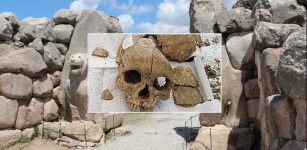 3,500-Year-Old Skull And Thighbone Discovered In Sapinuwa Antique City Of Central Anatolia
Archaeology | Dec 3, 2019
3,500-Year-Old Skull And Thighbone Discovered In Sapinuwa Antique City Of Central Anatolia
Archaeology | Dec 3, 2019 -
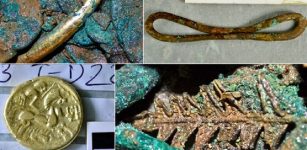 Remarkable Le Catillon II Hoard – World’s Largest Collection Of Celtic Coins And Jewellery
Archaeology | Nov 24, 2015
Remarkable Le Catillon II Hoard – World’s Largest Collection Of Celtic Coins And Jewellery
Archaeology | Nov 24, 2015 -
 Rare Gold Foils Found In Ancient Egyptian Tombs At Tel El-Deir In New Damietta
Archaeology | Jul 24, 2024
Rare Gold Foils Found In Ancient Egyptian Tombs At Tel El-Deir In New Damietta
Archaeology | Jul 24, 2024 -
 Mysterious 9,000-Year-Old Shaman Burial In Bad Dürrenberg – One Of Central Europe’s Most Spectacular Archaeological Discoveries
Featured Stories | Sep 15, 2023
Mysterious 9,000-Year-Old Shaman Burial In Bad Dürrenberg – One Of Central Europe’s Most Spectacular Archaeological Discoveries
Featured Stories | Sep 15, 2023 -
 Pytheas’s Voyage To The Arctic In 325 B.C. And Account Of Thule, The Strange Land Beyond
Featured Stories | May 29, 2021
Pytheas’s Voyage To The Arctic In 325 B.C. And Account Of Thule, The Strange Land Beyond
Featured Stories | May 29, 2021 -
 On This Day In History: Charlemagne Became The King Of The Franks – On Dec 5, 771
News | Dec 5, 2016
On This Day In History: Charlemagne Became The King Of The Franks – On Dec 5, 771
News | Dec 5, 2016 -
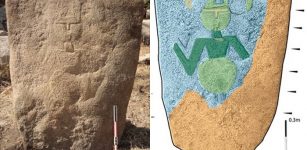 Unique Balchiria Stelae Engraved With A Goat-Like Figure Found On Corsica Is A Puzzle
Featured Stories | Feb 3, 2020
Unique Balchiria Stelae Engraved With A Goat-Like Figure Found On Corsica Is A Puzzle
Featured Stories | Feb 3, 2020 -
 What Is The Meaning Of Ankh – Ancient Egyptian Symbol
Ancient Symbols | Sep 21, 2023
What Is The Meaning Of Ankh – Ancient Egyptian Symbol
Ancient Symbols | Sep 21, 2023 -
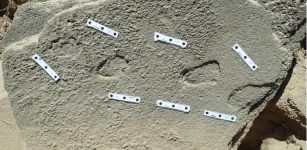 Ancient Footprints Offer Evidence Humans Wore Shoes 150,000 Years Ago – Scientists Say
Archaeology | Sep 11, 2023
Ancient Footprints Offer Evidence Humans Wore Shoes 150,000 Years Ago – Scientists Say
Archaeology | Sep 11, 2023 -
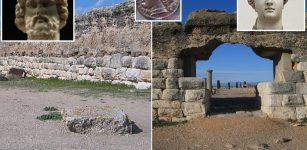 Ancient City Empuries (Emporiae) With Best Greek Ruins Located Outside Of Greece
Featured Stories | Dec 29, 2022
Ancient City Empuries (Emporiae) With Best Greek Ruins Located Outside Of Greece
Featured Stories | Dec 29, 2022 -
 Unique Purbeck Marble Found On England’s Oldest Historic Shipwreck
Archaeology | Jun 14, 2024
Unique Purbeck Marble Found On England’s Oldest Historic Shipwreck
Archaeology | Jun 14, 2024 -
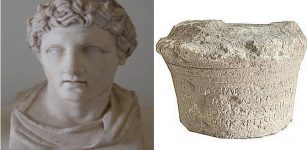 2,000-Year Old Engraved Kurdistan Tablet Referring To A Hellenistic Ruler Demetrius – Analyzed
Archaeology | Dec 14, 2020
2,000-Year Old Engraved Kurdistan Tablet Referring To A Hellenistic Ruler Demetrius – Analyzed
Archaeology | Dec 14, 2020 -
 Study Sheds Light On Life Beyond Rome’s Frontier
Archaeology | Jun 2, 2022
Study Sheds Light On Life Beyond Rome’s Frontier
Archaeology | Jun 2, 2022 -
 Cheng I Sao: Dangerous Female Pirate Whose Strict Code Of Laws Kept Pirates Subordinated And Successful
Featured Stories | Mar 11, 2019
Cheng I Sao: Dangerous Female Pirate Whose Strict Code Of Laws Kept Pirates Subordinated And Successful
Featured Stories | Mar 11, 2019 -
 Why Did Winter Baths Become So Popular?
Ancient History Facts | Jan 16, 2024
Why Did Winter Baths Become So Popular?
Ancient History Facts | Jan 16, 2024 -
 Discovery In Alabama Reveals Evidence Of Skull Surgery In North America Thousands Of Years Earlier Than Previously Thought
Archaeology | Apr 2, 2022
Discovery In Alabama Reveals Evidence Of Skull Surgery In North America Thousands Of Years Earlier Than Previously Thought
Archaeology | Apr 2, 2022 -
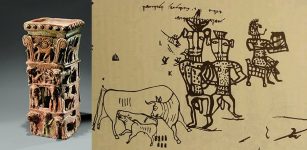 Ancient ‘Yahweh And His Asherah’ Inscriptions At Kuntillet ‘Ajrud Remain An Unsolved Biblical Mystery
Biblical Mysteries | Feb 12, 2021
Ancient ‘Yahweh And His Asherah’ Inscriptions At Kuntillet ‘Ajrud Remain An Unsolved Biblical Mystery
Biblical Mysteries | Feb 12, 2021 -
 Extraordinary Fossils From The End Of The Age Of The Dinosaurs – Study
Paleontology | Oct 15, 2023
Extraordinary Fossils From The End Of The Age Of The Dinosaurs – Study
Paleontology | Oct 15, 2023 -
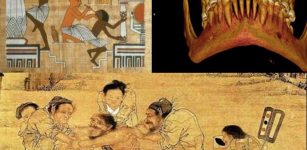 Ancient History Of Dentistry
Featured Stories | Jun 22, 2018
Ancient History Of Dentistry
Featured Stories | Jun 22, 2018 -
 Unusual Relic That Mysteriously Disappeared From The Vatican
Artifacts | Nov 8, 2018
Unusual Relic That Mysteriously Disappeared From The Vatican
Artifacts | Nov 8, 2018



